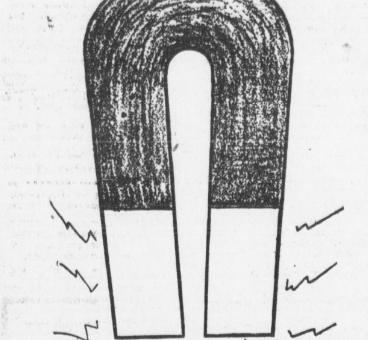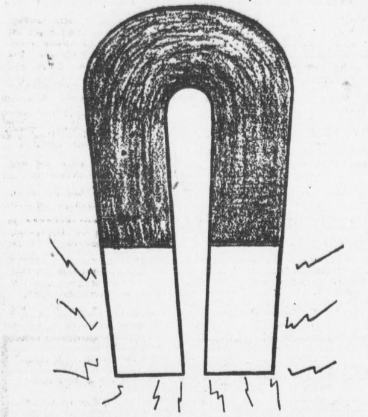
Our ancients had many strange beliefs and superstitions about magnets (lodestones). In the article below, published in 1913, the unknown author brings up some of the old beliefs about magnets.
The Wonderful Magnet
How Wild Superstition Settles Down Into Scientific Reality
Everybody knows something of the peculiarities of the magnet. As a boy you led tiny painted ducks around the water basin, holding a magnet in your hand, or you owned a horseshoe magnet that would pick up nails and needles.
You know now in a general kind of way that the magnet is a very useful as well as a somewhat mysterious thing.
The old Greeks and Romans simply knew that some remarkable iron ore found in Lydia, near the town of Magnesia, and hence called magnet, was capable of drawing and holding pieces of metal.
The ancients had the wildest theories concerning the magnet, just as we have wild theories about things that are new and strange to us today.

They thought that the magnet could be used in cases of sickness; that it could attract wood and flesh; that it influenced the human brain, causing melancholy. They believed that the power of a magnet could be destroyed by rubbing garlic on it, and that power brought back again by dipping the magnet in goat’s blood. They believed that a magnet could be used to detect bad conduct in a woman; they believed that it would not attract iron in the presence of a diamond. They believed much other nonsense quite as ridiculous as the nonsense that we believe today.
It must have seemed a great waste of time in wise men in the old days to discuss the magnet or think about it at all. Please observe how the apparent nonsense of early speculation finally ripens into actual utility, and learn to respect those who deal as best they can with questions that seem beyond our comprehension.
First the magnet was made actually and wonderfully useful in the compass. Who discovered the compass nobody knows. It was probably invented by the Chinese and brought to Europe through the Arabs. Anyhow, some genius found out that a small needle brought in contact with the so called lodestone, or magnetic ore, absorbs the qualities of the lodestone, and when placed on a pivot will always point to the north.
In the magnet there were and there still are many mysteries. A form of perpetual motion seems to be embodied in the principle of magnetism. One strange fact it this, that the weight of the motel is exactly the same before it is magnetized and after it is magnetized.
Early students thought that the magnet pointed toward some particular spot in the sky, perhaps some magnetic star. One genius felt sure that there must be huge mountains of lodestone near the north pole. This suggestion was followed by ingenious yarns to the effect that in the extreme north ships had to be built with wooden nails, instead of iron nails, as the magnetic mountains would draw the iron nails out of the ship.
After this came the more rational conception that our own earth is a great magnet, and that the little magnet in the compass simply obeys in pointing the greater force of the earth magnet.
When you read of men and women dealing in the blundering kind of way with abstract, abstruse speculations and problems, do not laugh at them too heartily. They are no more ridiculous that the old Greeks who thought that a magnet could be regulated by garlic or goat’s blood. And their wild theories of today may settle down into great utility centuries from now. This applies to Christian Science, faith cures, telepathy, and the many other speculations of the present day. There is unquestionably much future fruit and value in many or all of them.
Source: The San Francisco call and post. (San Francisco, Calif.), 15 Dec. 1913.


There are places out in the Great Basin where you can find lodestones on the ground. They are dark, heavy, and look like iron. They show their structure. Rhomboid? Anyway we picked up a small bucket of samples between walnut and goose egg size and sold them for food and beer. We tested their magnetism by dragging them through the sand and look for filings. Some were pretty strong but mostly weaker than the manufactured ones. We called them “magnetite”.
What an awesome experience! As a child, I had a lodestone, but I always preferred the stronger magnets. I had ordered some nice ones from a catalog a few years ago, but I haven’t figured out what I want to do with them.